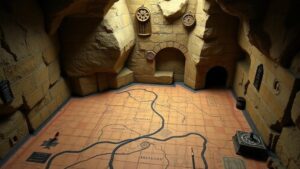Searching for the historical reality behind the Trojan War and the ruins of Troy.
Searching for the Historical Reality Behind the Trojan War and the Ruins of Troy
The Trojan War, a legendary conflict detailed in ancient Greek literature, has captivated historians, archaeologists, and the general public for centuries. Yet, the line between myth and reality often blurs, leading to myriad interpretations of this iconic event. This article delves into the historical evidence surrounding the Trojan War and the archaeological discoveries at the site known as Troy in modern-day Turkey.
The Myth According to Literature
The Trojan War is primarily chronicled in works by Homer, particularly the Iliad and the Odyssey, written in the 8th century BCE. According to these texts, the war was sparked by the abduction (or elopement) of Helen, queen of Sparta, by Paris, prince of Troy. This led to a siege lasting a decade, where legendary heroes like Achilles and Hector fought valiantly. While these tales provide a rich narrative, their historical accuracy remains a subject of rigorous debate.
The Archaeological Site of Troy
The ruins of Troy are located at Hisarlik, a settlement in modern-day Turkey. Excavations began in the 19th century, primarily led by Heinrich Schliemann, who believed he had found the city described in Homers epics. Archaeological work has revealed several layers of habitation at the site, suggesting it was occupied over a significant period, dating back to at least 3000 BCE.
Today, Troy is recognized as a complex archaeological site with nine distinct layers, each representing different periods of occupation:
- Troy I: Approximately 3000-2500 BCE
- Troy II: Approximately 2500-2300 BCE
- Troy III-V: Approximately 2300-1900 BCE
- Troy VI: Approximately 1900-1300 BCE (likely corresponds with the timeframe of the Trojan War)
- Troy VII: Approximately 1300-1000 BCE
Of particular interest is Troy VI, which shows evidence of destruction–suggesting a violent end, potentially aligning with the legendary account of the fall of Troy. Artifact assemblages from this layer, including pottery and tools, indicate strong cultural influences from both the Aegean region and Anatolia.
Evidence of War and Conflict
The archaeological evidence supporting the existence of a conflict around the time of Troy VI includes remnants of fortress-like walls that were notably thick and substantial, indicating a need for defense. Also, destruction layers, as a result of fire and warfare, align with descriptions found in Homeric tales.
In a detailed study published in 2020, researchers noted the presence of arrowheads and sling stones within the Troy VI stratum, suggesting a period marked by violent confrontations. These findings heighten the possibility that a significant conflict did indeed occur around the time frame believed to be associated with the mythological Trojan War.
Comparative Historical Analysis
To frame the Trojan War within the broader historical context, it can be useful to compare it to other ancient conflicts. For example, the Hittite Empire, which flourished in Anatolia around the same time, was engaged in numerous territorial disputes with neighboring powers. Many scholars draw parallels between the descriptions of the Trojan War and recorded Hittite campaigns, indicating that such battles were common among the ancient peoples of the region.
The Role of Oral Tradition
The transmission of the Trojan War story through oral tradition cannot be overlooked. Before being inscribed by Homer, the events would have been recounted through generations. This process often embellishes details and alters narratives, which complicates the quest for a purely historical understanding. emotional resonance of the story has kept it alive, despite its potential detachment from actual events.
Conclusion: Bridging Myth and Reality
The historical reality of the Trojan War remains elusive; however, the interplay between myth and archaeology at Troy provides fertile ground for exploration. While definitive proof confirming the events as described by Homer may be lacking, the archaeological findings contribute to a compelling narrative that suggests a real conflict may have inspired the tales.
The ruins of Troy stand as a testament to human history–a blend of myth, memory, and archaeological reality. Continued research and exploration may yet unearth more clues about this legendary fight, one that has shaped literature and cultural identity for millennia.
Actionable Takeaways
- Explore archaeological reports and publications to gain insights into ongoing excavations at Troy and their significance.
- Read translations of the Iliad and other related texts to understand how the story has evolved over time.
- Engage with communities interested in historical research and archaeology to share findings and theories about the Trojan War.


